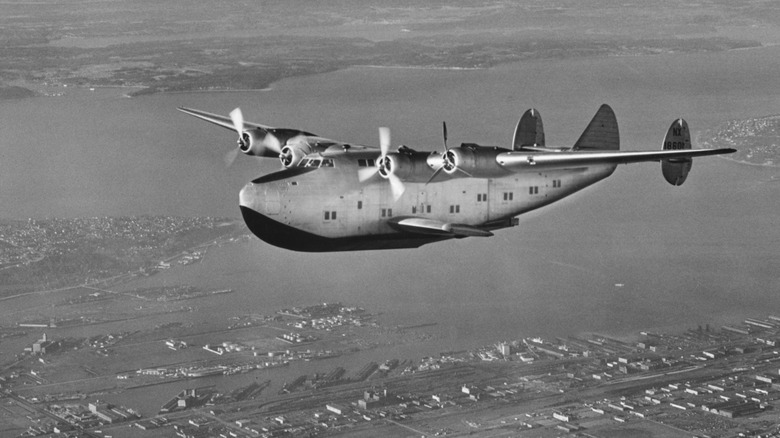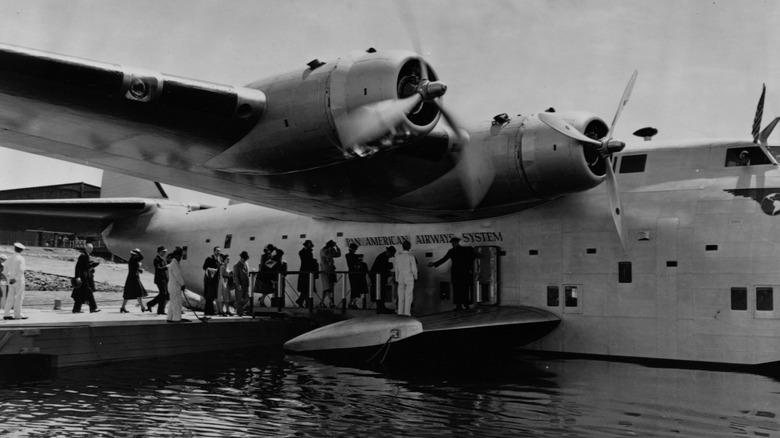When Was The First Transatlantic Passenger Flight And How Long Did It Take?
The first officially recorded transatlantic voyage happened over five centuries ago when Christopher Columbus set sail west, looking for a new route to Asia. He may have found the Bahamas instead of China, but in the eyes of Europe, it was gold nonetheless. This voyage set the foundation for North America as we know it today and heralded the many Atlantic Ocean crossings that happened and are still happening at this very minute.
While those early colonial and passenger ships in the 1700s may have taken roughly a month to cross the 3,000 nautical miles of the Atlantic ocean, the sailors from that time probably didn't imagine that planes would come around and reduce it to the seven or eight hours we have today. However, we didn't get those speeds until after World War II, when jets became viable. Before that, it was big, relatively slow flying boats that made the heavy transatlantic flights, and it was one of such flying boats that undertook the first passenger flight across the Atlantic.
As slow as flying boats were, they still shortened the week-long ocean liner trips to a little over a day. On June 28, 1939, Boeing 314 Dixie Clipper, operated by Pan American Airways, was the first flying boat to take commercial passengers across the ocean, and it did it in about 30 hours of flying time. Although an overnight stop in Lisbon and refueling in the Azores took the total journey time to around 42 hours. It wasn't the very first transatlantic flight, but it was the first one with paying passengers.
What's the story behind the first transatlantic passenger flight?
Before the Dixie Clipper set off from Port Washington, New York, Pan Am had to carry out quite a bit of preparation and diplomacy to prepare for a flight with paying passengers. Firstly, the Boeing 314 had to be built specifically for long-range transoceanic travel. When Pan Am asked Boeing to make a flying boat capable of long-distance, overwater flights, Boeing looked at its earlier XB-15 bomber prototype for inspiration and responded with 12 massive civilian aircraft with 152-foot wingspans. These planes each had four gigantic engines that sucked fuel from tanks set in the wings and spacious double-deck cabins that looked more like a luxury train car than an airplane. In fact, the Dixie Clipper herself later became a historical presidential plane that took President Roosevelt to the 1943 Casablanca Conference in Morocco.
However, they couldn't just use the planes for passengers immediately. The Civil Aeronautics Authority (now known as the Federal Aviation Administration) mandated proving flights carrying airmail and then an inspection flight carrying members of the press on June 17, before the maiden flight. When the authorities were satisfied, the Dixie Clipper set off on its southbound route from New York, heading to Lisbon and Marseilles.
On its inaugural run, it carried a crew of 12 and just 22 passengers, some of whom had paid the $375 one-way or $675 round-trip fare (over $15,000 adjusted for inflation) well in advance. Among the passengers were high-profile individuals such as Pan Am chairman Cornelius Vanderbilt Whitney and record-setting, "first flighter," Clara Adams, who all enjoyed lavish sleeping berths, lounges, and dining tables with linen and silverware.

